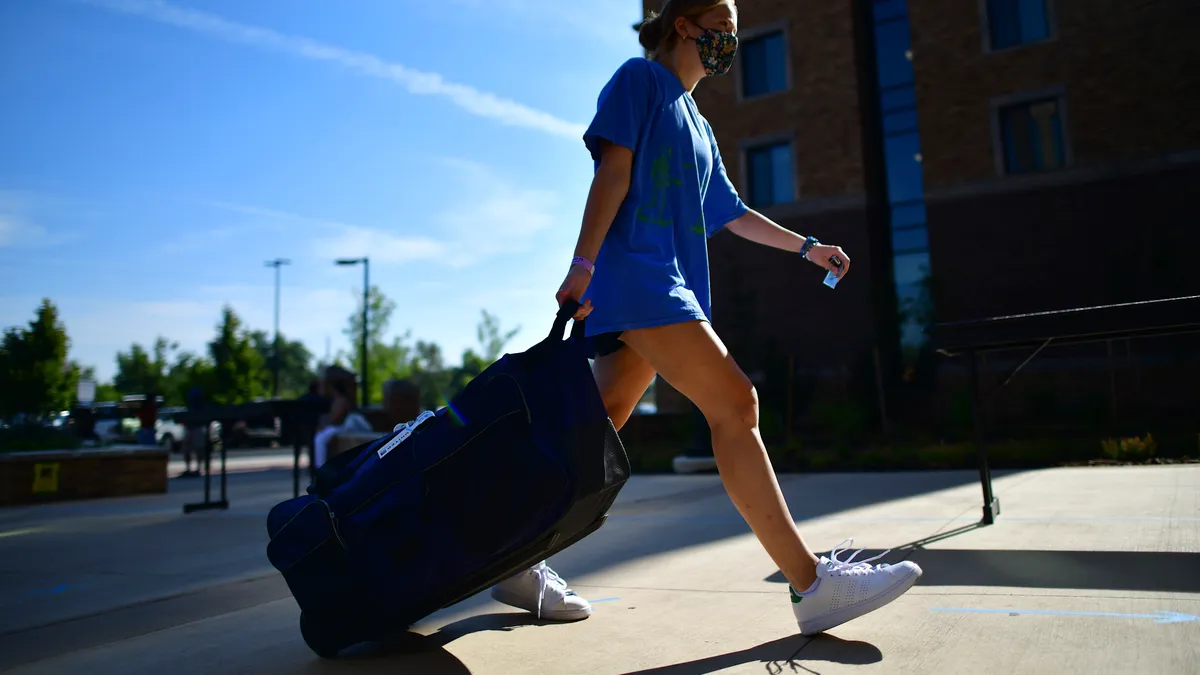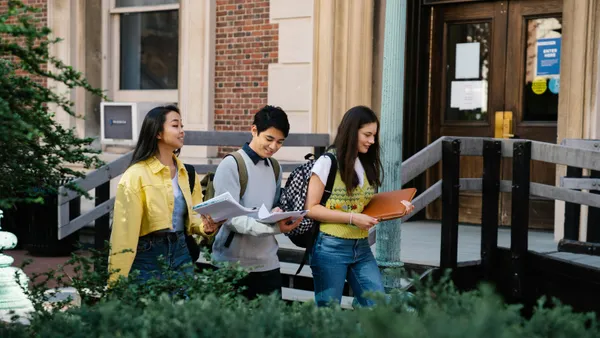Dive Brief:
- Colleges and universities lost about 191,500 transfer students in the 2020-21 academic year — representing a loss almost three times greater than the previous year's decline of 69,300 students, according to new data from the National Student Clearinghouse Research Center.
- Every type of transfer saw declines, but some held up better than most, according to the report. Upward transfers — students moving from two-year schools to four-year colleges — were relatively stable, declining only about 1.3%.
- Meanwhile, lateral transfers, or those between the same level of institutions, fell 11.9%. And reverse transfers, which are those from four-year colleges to two-year schools, slid 16.2%.
Dive Insight:
The Clearinghouse report paints a bleak picture for student mobility in the last academic year, with transfer enrollment falling 8.4% from the year before. That's more than double the decline of nontransfer enrollment, which slid 3.7%.
Disparities were stark. Enrollment of Black transfer students fell the most out of the racial and ethnic categories the Clearinghouse tracks, dropping by 12.9%. White students and Latinx students also saw sharp declines, falling 9.1% and 8.4%, respectively.
Transfer enrollment of men fell 12.1%, more than double the rate of decline for women, whose transfer enrollment shrank 5.8%.
Although upward transfer fell slightly, declines weren't seen across the board.
Upward transfer at highly selective institutions swelled during the pandemic, growing 10.3% in the 2020-21 academic year. At these schools, Asian students saw the greatest transfer enrollment increases, at 18.3%, while Black and Latinx transfer students saw increases of 8.7% and 8.2%, respectively.
Although increases in upward transfer into highly selective institutions were a "bright spot" in the report, disparities between these schools and others were unexpected, said Doug Shapiro, the executive director of the Clearinghouse Research Center.
Indeed, upward transfer "dropped substantially" at competitive and less competitive schools, with respective declines of 3.5% and 4.4%, the report showed.
"It was surprising how much more the selective institutions were able to do in that area than the less competitive institutions that typically admit far more upward transfers," Shapiro said. The highly selective schools may have had a greater ability to reach out to potential transfers and streamline the enrollment process for them, he added.
The report also tracked transfer enrollment at historically Black colleges and universities and Hispanic-serving institutions. While HBCUs appeared largely unaffected, HSIs saw transfer enrollment fall by 11.8%.
Although the pandemic was expected to disrupt students' persistence rates, they were largely unaffected among transfer students, according to the report. However, they fell 0.9% among students who transferred to highly selective students, which Shapiro said was disappointing.
"In some sense, you could say these were among the most resilient students that were willing and able to make a transition like this from a community college to a four-year institution in a pandemic," Shapiro said. "To see that they were less likely to stay enrolled even one term later is certainly discouraging, but not altogether unexpected."















